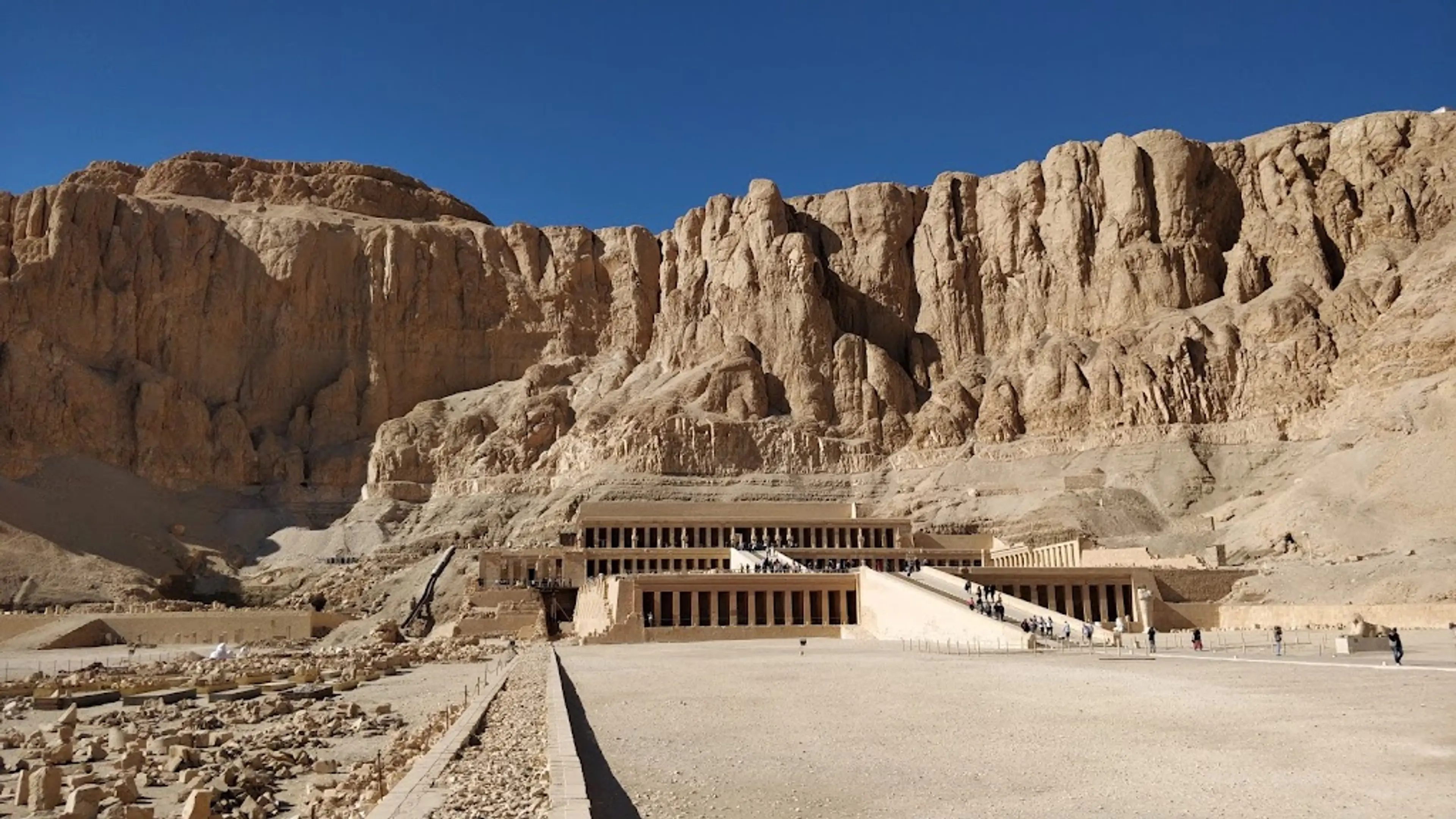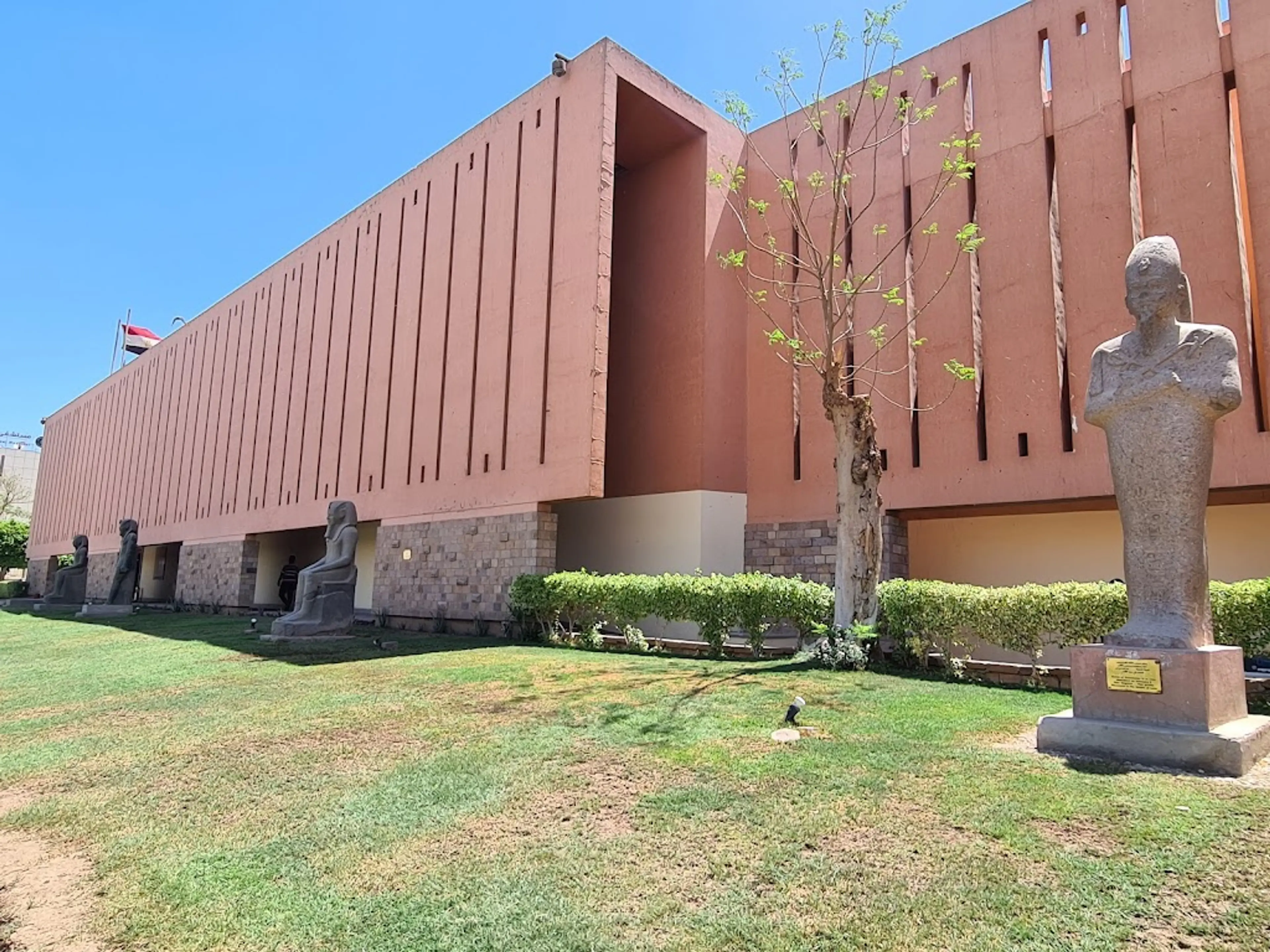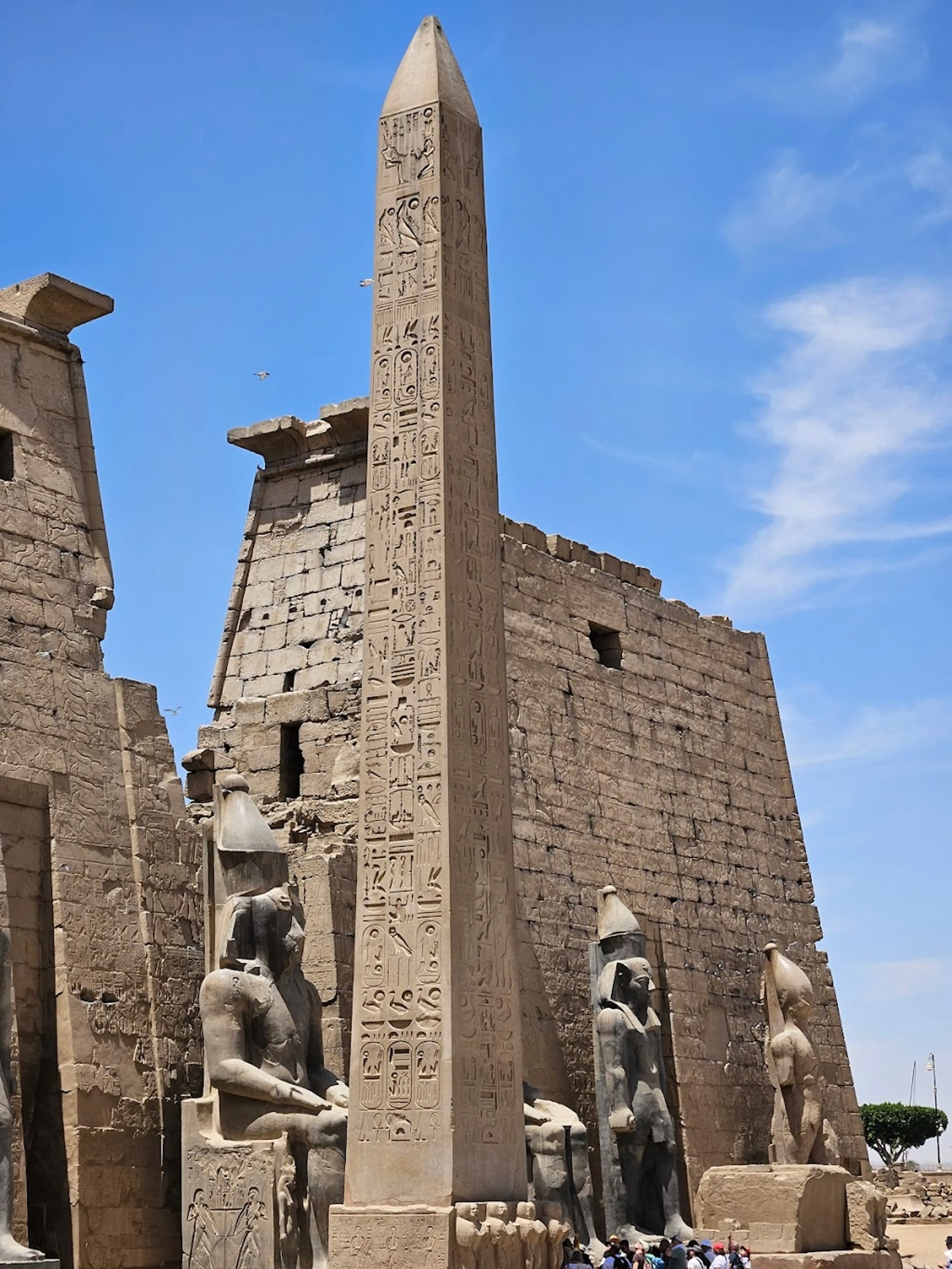3-Day Adventure and Nightlife Off-The-Beaten-Path Itinerary in Luxor
Luxor, Egypt
3 days





About Luxor, Egypt
Experience the grandeur of ancient civilization in Luxor, Egypt. Known as the world's largest open-air museum, Luxor offers a journey back in time with its awe-inspiring monuments and temples. Visit the Valley of the Kings, home to Tutankhamun's tomb, and the magnificent Karnak Temple, the largest religious building ever constructed. Explore the Luxor Temple, a stunningly preserved site that comes alive at night with dramatic lighting. Cruise down the Nile, witnessing the blend of modern life and ancient history. Luxor also offers vibrant markets, exquisite cuisine, and warm Egyptian hospitality. Whether you're a history enthusiast or an adventure seeker, Luxor promises an unforgettable journey into the heart of ancient Egypt.
3-Day Itinerary
Day 2
Adventures on the East Bank
Morning
Begin your day with a Hot air balloon ride over Luxor. This is a unique way to see the city and its surrounding landscape.
Lunch
Have lunch at a local restaurant. Try some seafood dishes, as Luxor is known for its fresh fish.
Afternoon
Spend the afternoon exploring the Luxor Museum. This museum houses a vast collection of artifacts from ancient Egypt.
Dinner
Dine at a local restaurant. Try some traditional Egyptian desserts like basbousa or umm ali.
Evening
Spend the evening at a local music venue. Luxor has a vibrant music scene, with many venues offering live performances.
Day 3
Immersing in Ancient History
Morning
Start your day with a visit to the Karnak Temple. This massive complex is one of the largest religious buildings in the world.
Lunch
Enjoy lunch at a local restaurant. Try some traditional Egyptian street food like shawarma or falafel.
Afternoon
Spend the afternoon exploring the Luxor Temple. This ancient temple is beautifully preserved and offers a glimpse into Egypt's past.
Dinner
Have dinner at a local restaurant. Enjoy dishes like tagen, a traditional Egyptian stew.
Evening
End your trip with a night cruise on the Nile. This is a relaxing way to see Luxor's skyline and enjoy the city's nightlife.
Attractions in Itinerary (7)

1Valley of the Kings
A valley where tombs were built for the Pharaohs and powerful nobles of the New Kingdom of Egypt

2Temple of Hatshepsut
The Mortuary Temple of Hatshepsut, also known as the Djeser-Djeseru, is a mortuary temple of Ancient Egypt located in Upper Egypt. Built for the Eighteenth Dynasty pharaoh Hatshepsut, it is located beneath the cliffs at Deir el-Bahari on the west bank of the Nile near the Valley of the Kings.

3Hot air balloon ride
Experience the world's greatest open-air museum. Enjoy the panoramic view of Luxor town from the sky

4Luxor Museum
An archaeological museum with a small, carefully selected collection of items from the Theban area

5Karnak Temple
A vast mix of decayed temples, chapels, pylons, and other buildings

6Luxor Temple
An ancient Egyptian temple complex located on the east bank of the Nile River

7Nile night cruise
A Nile night cruise is a must-do when in Luxor. Enjoy the stunning views of the city and its ancient monuments illuminated against the night sky. Some cruises also offer dinner and live entertainment, making it a perfect evening out.
Local Food and Drinks (12)

Ful Medames
A traditional Egyptian breakfast dish made from fava beans, olive oil, parsley, garlic, and lemon. It's a staple food in Luxor and is often served with bread.

Koshari
A popular Egyptian dish made from rice, macaroni, and lentils mixed together, topped with a spiced tomato sauce, and garlic vinegar, and garnished with chickpeas and crispy fried onions.

Molokhia
A traditional Egyptian soup made from the leaves of the jute plant, chicken broth, garlic, and coriander. It's a common dish in Luxor and is often served with bread or rice.

Shawarma
A popular street food in Luxor, made from thinly sliced cuts of meat, like chicken, beef, or lamb, rolled into a large piece of flatbread or pita.

Ta'meya
Also known as Egyptian falafel, Ta'meya is made from fava beans and herbs, deep-fried to perfection. It's a popular street food in Luxor.

Mahshi
A traditional Egyptian dish made by stuffing vegetables like bell peppers, zucchini, tomatoes, or cabbage leaves with a mixture of rice, herbs, and spices.

Baba Ghanoush
A popular appetizer in Luxor, made from mashed cooked eggplant mixed with tahini, olive oil, and various seasonings.

Kunafa
A traditional Egyptian dessert made from thin noodle-like pastry, or alternatively fine semolina dough, soaked in sweet, sugar-based syrup, and typically layered with cheese.

Basbousa
A sweet cake made from semolina soaked in simple syrup. Coconut is a popular addition. The cake is often topped with almonds and traditionally cut into diamond shapes.

Egyptian Tea
A staple drink in Luxor, Egyptian tea is typically black and sweet. It can be served with milk or lemon, or flavored with mint or sage.

Sugarcane Juice
A popular drink in Luxor, made by crushing peeled sugar cane in a mill to extract the juice. It's sweet, refreshing, and often served chilled.

Sahlab
A warm, creamy drink made from milk, sugar, and the powdered roots of the Orchid plant. It's a popular winter beverage in Luxor, often topped with cinnamon and served with a side of pastry.
Best time to visit
The best time to visit Luxor, Egypt is from October to April. During these months, the weather is cooler and more comfortable for sightseeing. This period is also considered the peak tourist season. However, if you want to avoid crowds, the months of December and January should be avoided as they are the busiest. Remember, Luxor is home to some of Egypt's most incredible ancient monuments, so it's worth planning your trip carefully to make the most of your visit.
How to get around
Taxi
Taxis are a common way to get around in Luxor. They are available 24/7 and can be hailed from the street or booked in advance. They are metered, but it's also common to agree on a price before the journey.
Car Hire
If you prefer to drive yourself, there are several car hire companies in Luxor. Remember that driving in Egypt can be quite different from what you're used to, so be prepared for a unique experience.
Ridesharing
Uber operates in Luxor, providing a convenient and familiar way to get around. You can book a ride using the app on your smartphone, just like you would at home.
Bicycle
Bicycles are a popular way to get around in Luxor, especially in the cooler months. There are several places where you can rent a bike for the day.
Horse Carriage
For a more traditional experience, try a horse carriage ride. These are especially popular for short trips along the Nile Corniche or around the Luxor Temple.
Felucca
A felucca is a traditional wooden sailing boat used on the Nile. It's a peaceful and scenic way to travel, especially at sunset. You can hire a felucca for a short trip or a longer cruise.
Local Ferry
For crossing the Nile, the local ferry is a cheap and efficient option. It runs regularly between the East and West Banks.
Hot Air Balloon
For a truly unforgettable experience, take a hot air balloon ride over the Valley of the Kings. It's an early start, but the views are worth it.
Foot
Many of the main attractions in Luxor are within walking distance of each other, especially on the East Bank. Walking is a great way to soak up the atmosphere and see the city at your own pace.
Important information
Currency£ EGP
Time zoneUTC+2
Driving sideRight
Emergency phoneAmbulance: 123; Fire: 180; Police: 122
Drinking waterOpt for bottled water
Power sockets
Voltage220 V
Things to know about Luxor, Egypt as a first time visitor
1
Luxor is generally safe for tourists, but it's always important to stay aware of your surroundings and keep your belongings secure.
2
The official language is Arabic, but English is widely spoken in tourist areas.
3
The local currency is the Egyptian pound (EGP). Credit cards are accepted in many places, but it's a good idea to carry some cash for smaller vendors.
4
Tipping is customary in Egypt. It's known as 'baksheesh' and is expected for most services.
5
The best time to visit Luxor is between October and April when temperatures are cooler. During these months, temperatures range from 50°F (10°C) to 80°F (27°C).
6
During the summer months (May to September), temperatures can reach up to 105°F (40°C), so it's best to avoid this time if you're not a fan of extreme heat.
7
Dress modestly to respect the local culture. Women should cover their shoulders and knees, and men should avoid wearing shorts.
8
Bargaining is common in markets and some shops. Don't be afraid to negotiate the price.
9
It's recommended to drink bottled water rather than tap water.
10
Egyptian cuisine is delicious. Don't miss out on trying local dishes like koshary, ful medames, and molokhia.
11
Public transportation is available, but taxis are the most convenient way to get around Luxor.
12
Be prepared for a sales pitch. Many locals in tourist areas will try to sell you something.
13
If you're planning to visit religious sites, be respectful. Remove your shoes and avoid taking pictures unless it's allowed.
14
It's a good idea to have a local guide or tour operator to help navigate the city and understand the historical sites.
15
Be aware that some tourist sites may have additional fees for photography.
16
It's recommended to carry a hat, sunglasses, and sunscreen to protect yourself from the sun.
17
Public restrooms may not always have toilet paper, so it's a good idea to carry some with you.
18
Egypt uses type C and type F plugs, so you may need a power adapter.
19
The country code for Egypt is +20, and the area code for Luxor is 095.
20
Always ask for permission before taking photos of locals.
Basic Arabic to know as a first time visitor
English phrase | Native phrase | Pronunciation | When to use it |
|---|---|---|---|
Hello | مرحبا | Marhaba | Greeting someone |
Goodbye | مع السلامة | Ma'a as-salama | Leaving or saying goodbye |
Please | من فضلك | Min fadlak | Making a request |
Thank you | شكرا | Shukran | Expressing gratitude |
You're welcome | على الرحب و السعة | Ala al-rahb wa al-sa'a | Responding to thank you |
Excuse me | عفوا | Afuwan | Getting attention/ apologizing |
Yes | نعم | Na'am | Affirmative response |
No | لا | La | Negative response |
I don't understand | أنا لا أفهم | Ana la afham | Communication difficulties |
Do you speak English? | هل تتكلم الإنجليزية؟ | Hal tatakallam al-ingliziya? | Communication difficulties |
I'm sorry | أنا آسف | Ana asef | Apologizing |
How much is this? | بكم هذا؟ | Bikam hadha? | Shopping |
Where is the bathroom? | أين الحمام؟ | Ayn al-hammam? | Asking for directions |
I need a doctor | أحتاج إلى طبيب | Ahtaj ila tabib | In case of emergency |
Help | مساعدة | Musa'ada | In case of emergency |
I am lost | أنا ضائع | Ana daea | Asking for help |
Can I use my credit card? | هل يمكنني استخدام بطاقتي الائتمانية؟ | Hal yumkinuni istikhdam bitaqati al-i'timania? | At shops or restaurants |
Water | ماء | Maa | At restaurants or shops |
Food | طعام | Taam | At restaurants or shops |
Taxi | تاكسي | Taksi | Transportation |
Packing List
Clothing
Lightweight clothing
Underwear
Socks
Comfortable walking shoes
Swimwear
Sunglasses
Hat for sun protection
Light jacket or sweater for cooler evenings
Toiletries
Travel-size shampoo
Travel-size conditioner
Travel-size body wash
Toothbrush
Toothpaste
Deodorant
Razor
Shaving cream
Sunscreen
Lip balm with SPF
Hand sanitizer
Insect repellent
First aid kit
Prescription medications
Travel-size laundry detergent
Travel documents and essentials
Passport
Driver's license or ID card
Credit and debit cards
Cash in local currency
Travel insurance documents
Hotel and tour reservation confirmations
Emergency contacts and addresses
Maps and guidebooks
Electronics and gadgets
Smartphone
Charger for smartphone
Power bank
Camera
Charger for camera
Memory cards for camera
Travel adapter
Headphones
Miscellaneous items
Travel pillow
Earplugs
Eye mask
Snacks
Reusable water bottle
Books or e-reader for entertainment
Travel-size umbrella
Tissues
Wet wipes
Plastic bags for dirty clothes or shoes
Weather Conditions
Luxor, Egypt is known for its hot desert climate, so it's essential to prepare accordingly. The city experiences very little rainfall throughout the year, so you won't need to pack a raincoat or umbrella. The summer months, from May to September, can be extremely hot with temperatures often exceeding 104°F (40°C). If you're planning to visit during this period, it's crucial to stay hydrated and protect yourself from the sun. Lightweight, breathable clothing, sunblock, and a hat are must-haves. Try to avoid outdoor activities during peak sun hours, usually between 10 am and 4 pm. The winter months, from October to April, are milder and more comfortable for sightseeing. Daytime temperatures typically range from 68°F to 79°F (20°C to 26°C), while nights can be cooler, dropping to around 50°F (10°C). If you're visiting during this period, it's advisable to pack layers, including a light jacket or sweater for the evenings. Regardless of when you visit, remember that Luxor is home to many sacred and historical sites. Modest clothing that covers shoulders and knees is recommended when visiting these locations. Also, don't forget to pack comfortable shoes for exploring the city's many attractions. Lastly, always check the local weather forecast before your trip to ensure you're packing appropriately and can plan your activities accordingly. Enjoy your visit to Luxor!
| Month | Hi / Lo (°C) | Weather Overview |
|---|---|---|
January | 23° / 5° | January is a cool month in Luxor, Egypt, making it a perfect time for tourists who prefer milder temperatures. |
February | 25° / 7° | February sees a slight increase in temperature, but it's still comfortable for sightseeing and exploring Luxor. |
March | 29° / 11° | March marks the beginning of spring in Luxor, with warmer temperatures during the day. |
April | 35° / 16° | April is considerably warmer, but early mornings and late evenings are still pleasant for outdoor activities. |
May | 39° / 21° | May is the start of the hot season in Luxor, so it's recommended to plan activities in the early morning or late evening. |
June | 41° / 24° | June is one of the hottest months in Luxor, with high temperatures throughout the day. |
July | 41° / 25° | July is the peak of summer in Luxor, with high temperatures even at night. |
August | 41° / 25° | August continues the summer heat, so it's essential to stay hydrated and protect yourself from the sun. |
September | 39° / 23° | September marks the end of summer, but the temperatures remain high, especially during the day. |
October | 34° / 18° | October sees a significant drop in temperature, making it a pleasant time to visit Luxor. |
November | 29° / 13° | November is a comfortable month for sightseeing, with mild temperatures during the day. |
December | 24° / 8° | December is one of the coolest months in Luxor, making it a perfect time for tourists who prefer milder temperatures. |
Did you know?
Places near by Luxor, Egypt

Valley of the Kings
This is a valley in Egypt where, for a period of nearly 500 years from the 16th to 11th century BC, rock cut tombs were excavated for the pharaohs and powerful nobles of the New Kingdom.

Temple of Hatshepsut
This is a mortuary temple of Ancient Egypt located in Upper Egypt. Built for the Eighteenth Dynasty pharaoh Hatshepsut, it is located beneath the cliffs at Deir el-Bahari on the west bank of the Nile near the Valley of the Kings.

Medinet Habu
This is the name of an archaeological locality situated near the foot of the Theban Hills on the West Bank of the River Nile opposite the modern city of Luxor, Egypt.

Temple of Seti I
This is the mortuary temple of Pharaoh Seti I on the west bank of the Nile in Abydos. The edifice is situated near the town of al-Balyana, about 11 miles west of the Nile.

Dendera Temple complex
This is one of the best-preserved temple complexes in Egypt. The complex covers approximately 40,000 square meters. Also the site of the famed Dendera light relief, Dendera is an impressive and fascinating site.

Temple of Kom Ombo
This is an unusual double temple built during the Ptolemaic dynasty in the Egyptian town of Kom Ombo. Some additions to it were later made during the Roman period.

Abu Simbel Temples
These are two massive rock temples at Abu Simbel, a village in Nubia, southern Egypt, near the border with Sudan. They are situated on the western bank of Lake Nasser, about 230 km southwest of Aswan.